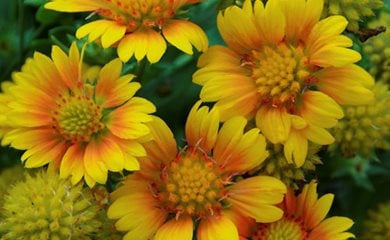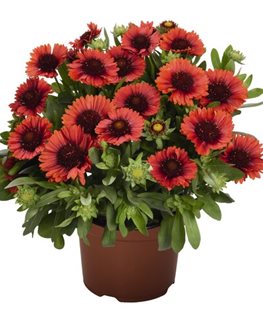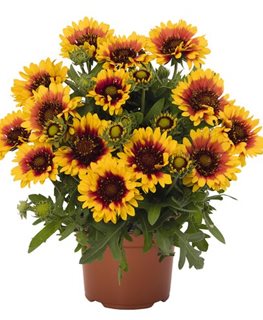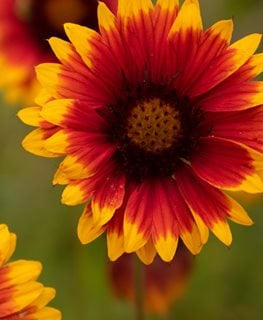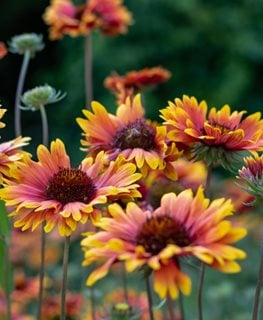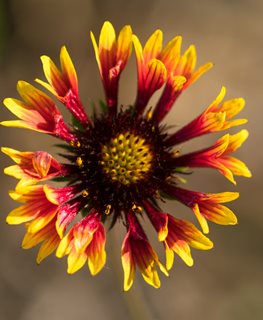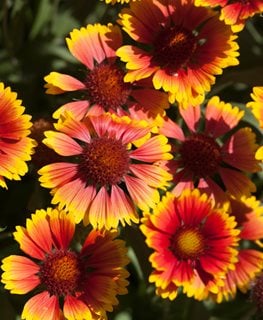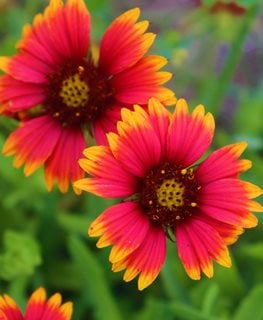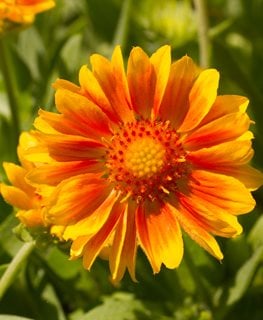GROWING BEAUTIFUL BLANKET FLOWER (GAILLARDIA)
For months of sizzling color, add these cheerful flowers to your landscapeFor long-lasting, easy-to-grow color in the garden, few plants rival blanket flower. This sun-loving prairie native with daisy-like flowers needs little care once established, rewarding with months of continuous bloom from late spring to fall. The common name is derived from the bright flower patterns that resemble blankets woven by American Indians, and refers to wild colonies that blanket the ground.
There are over two dozen species of annuals and perennials, most of which are native to North America. The nectar-rich flowers attract hummingbirds, butterflies, and insect pollinators, while the seed heads are a food source for songbirds. Add some of these indispensable plants to your yard.
BASICS
Botanical name:
Gaillardia spp.
Common names:
Blanket flower, common gaillardia, or Indian blanket
Hardiness Zones:
3-10 for perennials, depending on the variety.
Height/Spread:
Upright, mounding or spreading habit, 1 to 3 feet tall and 1 to 2 feet wide
Exposure:
Full sun
Bloom time:
Late spring through fall
Flowers:
Daisy-like flowers bloom over an exceptionally long time, from late spring to fall. They occur in shades of orange, yellow, red, apricot, peach, and bronze, many with distinct patterns. Petals are pointed, fringed or tubular, in single or double arrangements.
Foliage:
The gray-green foliage is slightly hairy, with lance-shaped leaves that have smooth or lobed edges. Vigorous plants are upright or bushy with a strong branching habit.
Toxicity:
Skin irritation can occur on contact. Wash affected area with soap and water.
PLANTING BLANKET FLOWER

Photo: 13threephotography / Shutterstock
When to plant:
Plant starts or direct sow seeds outdoors in late spring after all danger of frost is past. Seeds can also be started indoors 4 to 6 weeks before the average last frost date.
Where to plant:
Plant in a site that receives full sun and good air circulation.
How to plant:
Amend garden beds with compost or other organic matter. For containers, use a high-quality potting soil. Make sure soil is loose and well-draining. If plants are pot-bound, gently tease out the roots. Dig a hole the size of the root ball and place in the planting hole so the top of the root ball is level or slightly higher than the surrounding soil. Fill in the hole with soil, tamp down gently to remove air pockets, and water thoroughly. Water plants 2 to 3 times a week until established.
Growing from seed:
- Indoors: Sow seeds indoors 4 to 6 weeks before your last frost-free date. Use seed starting mix and sow seeds on the surface of the soil. Keep evenly moist until germination in 7 to 20 days. Transplant seedlings outdoors when minimum temperatures are at least 50 degrees F.
- Outdoors: Direct sow seeds in a sunny site with average well-draining soil. Thin seedlings 6 to 12 inches apart.
BLANKET FLOWER CARE
Pruning and deadheading:
Deadhead spent flowers to encourage rebloom. At the end of the growing season, leave seed heads as food for goldfinches and other song birds. Perennial types can be short-lived. To increase their chances of winter survival, shear clumps back to 6 inches tall in late summer.
PRO TIP:
"You actually want to cut back older blooms before they drop all their petals and really go to seed, because then it will be a more continuous bloom and it will bloom longer." — Sean McManus, Spoken Garden (Blanket Flower Care video)
Watering:
Keep soil evenly moist until plants are established. Mature plants will tolerate drought and need little supplemental water. Water once or twice a week if conditions are hot and dry. Avoid overwatering, which can cause root rot and fungal diseases.
Soil:
Blanket flower thrives in average soil and is tolerant of poor, sandy or rocky soils. It is not particular about soil pH, but loose soil with good drainage is essential. Avoid planting in heavy clay soil.
Amendments and fertilizer:
Blanket flower needs little or no fertilizer. Apply a thin layer of compost around the base of established plants in spring.
Dividing:
To increase vigor and extend the life of perennial forms, divide plants every 2 to 3 years in spring or fall.
Diseases and pests:
Blanket flower has few problems when planted in the right conditions. Diseases included powdery mildew, aster yellows, and fungal leaf spot. Plant in an area with good air circulation to reduce the chance of powdery mildew. Root rot can occur in poorly draining soil or prolonged periods of rain. Pests include aphids, leaf hoppers, and thrips.
Deer resistance:
Some deer may find the rough texture of the stems and leaves to be distasteful, though blanket flower is rated a 'C' (occasionally severely damaged) by Rutgers University.
BLANKET FLOWER PICTURES
FREQUENTLY ASKED QUESTIONS
Do blanket flowers come back every year?
Yes, most blanket flowers (Gaillardia spp.) are short-lived perennials that return each year in USDA Zones 3–10. However, their lifespan can be just 2–3 years, especially in humid climates or poorly draining soil. Regular deadheading and dividing can help them persist longer.
Is blanket flower invasive?
No, blanket flower is not considered invasive. While some types readily self-seed, especially Gaillardia pulchella, they’re easy to manage and don’t aggressively spread or crowd out native species. They're a great choice for low-maintenance and pollinator-friendly gardens.
Is Gaillardia an annual or perennial?
Annuals like Gaillardia pulchella complete their lifecycle in one season.
Perennials such as G. aristata and hybrid forms (e.g., Gaillardia × grandiflora) return year after year in suitable zones.
Some gardeners treat perennials as annuals in colder regions or if they decline after a few seasons.
DESIGN IDEAS
There are many ways to incorporate blanket flower into your landscape. Here’s how:
- Plant blanket flower in a cottage-style border alongside other easy-care summer bloomers such as black-eyed Susan, salvia, phlox, coneflower, veronica, and bee balm.
- Place a smaller type in a container as a filler element in combination with other plants with similar needs such lantana, verbena, sedums, or small ornamental grasses such as blue fescue.
- Edge a sunny pathway with a low growing type for nonstop color all summer long.
- For eye-popping contrast, plant blanket flower alongside other summer bloomers in cooler hues such as purple salvia, Russian sage, or blue lily of the Nile.
- Mass on a slope for erosion control alongside other drought-tolerant perennials such as ornamental grasses, milkweed, catmint, and lavender.
- Naturalize with other native plants such as daisies, coneflower, tickseed, yarrow, and blazing star for a low-maintenance landscape.
- Transform a curbside strip with tough drought-tolerant plants such as blanket flower, sedums, sneezeweed, fescues, and asters.
- Plant taller forms in a cutting garden along with other cut flower favorites such as cosmos, zinnias, and dahlias for colorful fresh bouquets all summer long.
- Combine in a rock garden with other summer bloomers such as stonecrop, ice plant, dianthus, and beardtongue.
Companion plants:
Combine blanket flower with other drought-tolerant perennial companions such as lantana, coneflower, bee balm, blazing star, salvia, catmint, lavender, ornamental grasses, tickseed, and milkweed.
ABOUT THE AUTHOR
Janet Loughrey is a veteran garden writer and photographer with over 25 years of experience, contributing to major publications like Garden Design, Better Homes and Gardens, and Sunset. A former Master Gardener, she brings hands-on expertise from gardening in a wide range of climates, from upstate New York to the Pacific Northwest.
RELATED:
21 Easy Flowers
Drought-Tolerant Plants
12 Summer Flowers
25 Fall-Blooming Perennials
20 Fabulous Fall Flowers
25 Best Orange Flowers
